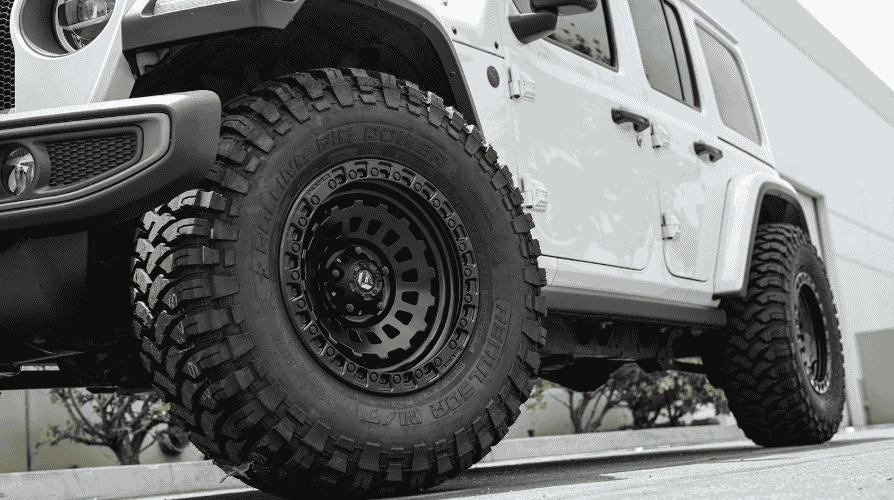A lifted truck or Jeep offers enhanced off-road capability, an aggressive stance, and better ground clearance. However, choosing the right tires is essential to optimize performance, ensure safety, and maintain ride quality. With so many options available, making the best choice can be overwhelming. Here are eight essential tips to help you pick the right tires for your lifted truck or Jeep.
Understand Your Driving Needs
Before purchasing new tires, consider how you primarily use your lifted vehicle. Do you mostly drive on highways, or do you frequently hit off-road trails? Different tires cater to different terrains, and choosing the right type ensures better performance and longevity.
- All-terrain tires: Ideal for drivers who split their time between highway driving and light off-road use.
- Mud-terrain tires: Best suited for extreme off-road conditions where deep treads provide better traction.
- Hybrid tires: A mix between all-terrain and mud-terrain tires, offering a balance of off-road grip and on-road comfort.
Choose the Right Tire Size
Lifting your truck or Jeep allows for larger tires, but selecting the right size is crucial for proper handling and performance. Larger tires provide better traction and clearance, but they can also affect acceleration, braking, and fuel efficiency.
- Check your vehicle’s specifications and compare them with a tire size chart to ensure compatibility.
- Avoid excessively large tires that may require additional modifications to your suspension, fenders, or gearing.
- Ensure the tires fit without rubbing against the body or suspension components.
Consider the Load Rating and Ply Rating
Lifted trucks and Jeeps often carry additional weight, such as body lift accessories, winches, and heavy-duty bumpers. Choosing tires with the correct load rating ensures safety and durability. The ply rating (or load range) indicates the tire’s strength and weight-bearing capability.
- Load Range C or D: Suitable for lighter loads and general use.
- Load Range E or F: Best for heavy-duty applications, towing, or carrying additional weight.
- Always check the manufacturer’s recommendation for load rating to prevent premature tire wear and damage.
Check the Tread Pattern
Tire tread patterns significantly impact traction, road noise, and handling. Understanding different tread patterns helps you choose the right set based on your driving habits.
- Highway tread: Designed for smooth, quiet rides with minimal rolling resistance.
- Aggressive tread: Provides maximum grip for off-road adventures but can be noisy on pavement.
- Hybrid tread: Offers a compromise between on-road comfort and off-road traction.
Evaluate the Sidewall Construction
The sidewalls of your tires play a crucial role in durability, impact resistance, and overall performance. Off-road driving demands tires with reinforced sidewalls to prevent punctures and enhance stability.
- Two-ply sidewalls: Suitable for mild off-road conditions and general driving.
- Three-ply or reinforced sidewalls: Ideal for rugged terrain where additional protection is necessary.
- Beadlock-compatible tires: Recommended for extreme off-roaders who run low tire pressure for increased traction.
Consider Weather and Seasonal Conditions
Your location and climate should influence your tire choice. Different tires are designed to handle various weather conditions effectively.
- All-season tires: Provide adequate performance in dry and wet conditions but may lack grip in extreme winter weather.
- Winter tires: Essential for cold climates where snow and ice create hazardous driving conditions.
- All-terrain or mud-terrain tires: Great for year-round use, but consider siping for better traction in wet conditions.
Look at Brand Reputation and Reviews
Investing in high-quality tires from a reputable brand ensures longevity, safety, and performance. Research different tire brands, read customer reviews, and check expert ratings before making a purchase.
- Premium brands: Offer superior durability, warranty coverage, and performance.
- Budget-friendly brands: May provide cost savings but often compromise on longevity and traction.
- Consider feedback from other lifted truck or Jeep owners to gauge real-world performance and reliability.
Check for Compatibility with Your Suspension Setup
A lift kit changes your vehicle’s suspension geometry, which can affect how your tires fit and perform. Ensuring your tires are compatible with your lift kit prevents handling issues and excessive wear.
- Body lifts: Allow for larger tires but may require additional body lift accessories to avoid rubbing.
- Suspension lifts: Offer better articulation but require proper alignment and gearing adjustments.
- Leveling kits: Provide a moderate lift and work best with slightly larger tires without major modifications.
Final Thoughts
Selecting the right tires for your lifted truck or Jeep is more than just an aesthetic choice—it’s about optimizing performance, safety, and longevity. By considering factors such as driving habits, tire size, load rating, tread pattern, and weather conditions, you can make an informed decision that enhances your vehicle’s capabilities. Use a tire size chart to compare options, and don’t overlook the importance of compatibility with your suspension setup and body lift accessories. With the right tires, you’ll enjoy a smoother, more efficient, and more capable ride, whether on the highway or the trails.







